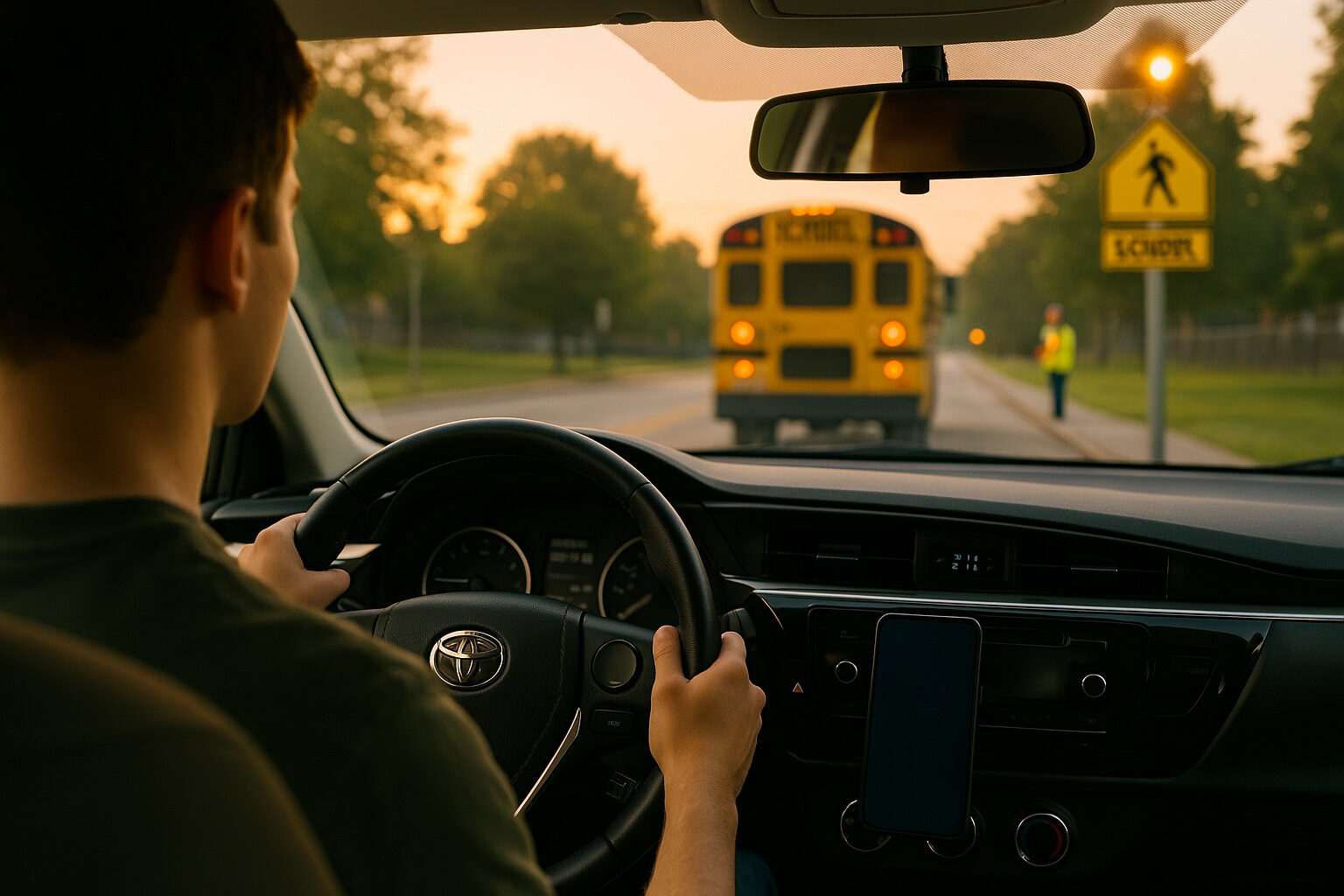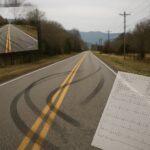As classes resume, many teen drivers are driving themselves to high school or commuting to college for the first time. The routine is new. Traffic is heavier. Mornings are early. Below is a clear, Tennessee-focused guide you can share with your teen to keep everyone safer.
Know the Tennessee Rules First
Graduated Driver License basics
Tennessee’s Graduated Driver License program phases teens into full driving. Highlights new families ask about most: curfew limits, passenger limits, and phone rules.
- Learner permit (Level 1): must drive with a licensed adult 21+ in the front seat; no driving 10 p.m.–6 a.m.; everyone buckled; no phone use.
- Intermediate restricted (Level 2): generally one passenger and no driving 11 p.m.–6 a.m. unless to and from work, school, or with a qualifying adult; seat belts required; no phone use.
- Hands-Free law: holding a phone while driving is illegal statewide, with extra attention in school zones when flashers are active.
Print the rules and put them in the glove box. If your teen isn’t sure, the safest answer is to wait, pull over, or call a parent.
Risky Times and Behaviors to Watch
- Night driving: Teen crash risk climbs after dark. CDC reports the fatal crash rate at night for teen drivers is about three times that of adults per mile, and 44% of teen crash deaths occur between 9 p.m. and 6 a.m.
- Speeding: In 2023, speeding was a factor in 34% of passenger-vehicle teen drivers in fatal crashes. Remind teens that extra speed steals the reaction time new drivers need.
- Distraction: Put the phone away. NHTSA reports 3,275 people were killed in distracted-driving crashes in 2023.
A Simple Safety Plan for the School Year
1) Curfew and routes
Set a weekday driving curfew that’s earlier than the legal limit. Agree on a couple of main routes to and from school and activities. Fewer surprises equals fewer mistakes.
2) Passenger limits
Stick to the Level 2 rule of one passenger. More teens in the car means more distraction and higher risk.
3) Phone-free driving
Mount the phone if navigation is needed, start the route before shifting to drive, and use true hands-free only. In school zones with active flashers, hands-free or not, keep your focus on the road.
4) Seat belts every trip
Everyone buckled, every seat, every time. Parents should model this without fail.
5) Rainy mornings and drowsy starts
School days start early. If your teen is tired, leave five minutes earlier and slow down. Fatigue, rush, and first-period anxiety are a bad mix.
For Parents: Get It in Writing
Create a Parent-Teen Driving Agreement that covers curfew, passengers, phone rules, speeding, and consequences. The CDC provides a ready-to-use template that you can print and update as your teen gains experience.
Quick Checklist Teens Can Screenshot
- Leave five minutes early
- Phone on Do Not Disturb
- Seat belts on, passengers limited
- Eyes up near bus stops and crosswalks
- No passing a bus with red lights and stop arm out
- If you feel rushed or upset, pull over and reset
Related Reading in This Series
- Buses Are Back: Sharing the Road with School Buses Safelyhttps://jstillman.com/buses-are-back-sharing-the-road-with-school-buses-safely/
- School Zone Safety: Navigating Slow-Down Areas as Classes Resumehttps://jstillman.com/school-zone-safety-navigating-slow-down-areas-as-classes-resume/
- School Drop-Off Safety Tips for Busy Carpool Laneshttps://jstillman.com/school-drop-off-safety-tips-for-busy-carpool-lanes/
If you or your teen was injured in a crash, Stillman & Friedland is here to help. Call 615-244-2111 or reach out through our online contact form.
Because we care,
Stillman & Friedland







